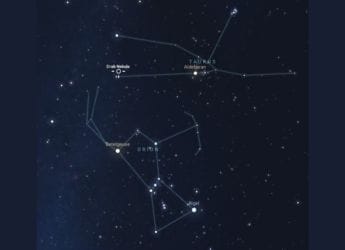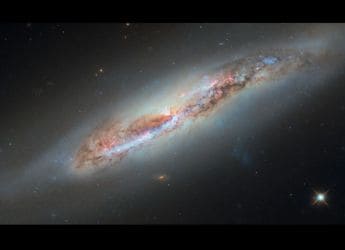- Home
- Science
- Science News
- ISRO Successfully Tests Propulsion Systems on India's First Human Spaceflight Mission Gaganyaan
ISRO Successfully Tests Propulsion Systems on India's First Human Spaceflight Mission Gaganyaan
ISRO said three more hot tests are scheduled, to demonstrate de-boosting requirements and off-nominal mission scenarios.

Photo Credit: ISRO/ Twitter
ISRO said three more hot tests are scheduled
ISRO has successfully carried out two more tests as part of plans to further validate and refine the performance of the propulsion system that would be used to launch India's first human spaceflight mission Gaganyaan. The "hot tests" on Gaganyaan Service Module Propulsion System (SMPS) were conducted at the ISRO Propulsion Complex, Mahendragiri, in Tamil Nadu on Wednesday.
The Gaganyaan project envisages demonstration of human spaceflight capability by launching a crew of three members to an orbit of 400km for a three days mission and bring them back safely to earth, by landing in Indian sea waters, according to ISRO.
"These tests will further validate and refine the performance of the propulsion system, ensuring its readiness for the upcoming Gaganyaan mission," it said.
"These tests (carried out on July 26) marked the second and third hot tests in the Service Module – System Demonstration model (SM-SDM) phase 2 test series. The first hot test was conducted on July 19, 2023," the Bengaluru-headquartered national space agency said in a statement.
ISRO said three more hot tests are scheduled, to demonstrate de-boosting requirements and off-nominal mission scenarios.
The SMPS is designed and developed by the Liquid Propulsion System Centre located at Bengaluru and Valiamala, Thiruvananthapuram.
During the tests on Wednesday, the thrusters were operated in both continuous and pulse mode, in sync with the mission profile.
The initial hot test which lasted for 723.6 seconds focused on demonstrating Orbital Module injection and the calibration burn of 100 Newton thrusters and Liquid Apogee Motor (LAM) engines.
"The calibration burn was essential to identify and isolate any non-operational engines. The LAM engines and reaction control system (RCS) Thrusters performed as expected," the statement said.
"The latter hot test, with a duration of 350 seconds, aimed to demonstrate the circularisation of the Orbital Module to achieve the final orbit. During this test, the LAM engines operated in continuous mode, while the RCS Thrusters fired in pulse mode," it added.
Get your daily dose of tech news, reviews, and insights, in under 80 characters on Gadgets 360 Turbo. Connect with fellow tech lovers on our Forum. Follow us on X, Facebook, WhatsApp, Threads and Google News for instant updates. Catch all the action on our YouTube channel.
Related Stories
- Samsung Galaxy Unpacked 2025
- ChatGPT
- Redmi Note 14 Pro+
- iPhone 16
- Apple Vision Pro
- Oneplus 12
- OnePlus Nord CE 3 Lite 5G
- iPhone 13
- Xiaomi 14 Pro
- Oppo Find N3
- Tecno Spark Go (2023)
- Realme V30
- Best Phones Under 25000
- Samsung Galaxy S24 Series
- Cryptocurrency
- iQoo 12
- Samsung Galaxy S24 Ultra
- Giottus
- Samsung Galaxy Z Flip 5
- Apple 'Scary Fast'
- Housefull 5
- GoPro Hero 12 Black Review
- Invincible Season 2
- JioGlass
- HD Ready TV
- Laptop Under 50000
- Smartwatch Under 10000
- Latest Mobile Phones
- Compare Phones
- OnePlus 15R
- Realme Narzo 90x 5G
- Realme Narzo 90 5G
- Vivo S50 Pro Mini
- Vivo S50
- OPPO Reno 15c
- Redmi Note 15 5G
- Redmi Note 15 Pro 5G
- Asus ProArt P16
- MacBook Pro 14-inch (M5, 2025)
- Infinix Xpad Edge
- OnePlus Pad Go 2
- OnePlus Watch Lite
- Just Corseca Skywatch Pro
- Acerpure Nitro Z Series 100-inch QLED TV
- Samsung 43 Inch LED Ultra HD (4K) Smart TV (UA43UE81AFULXL)
- Asus ROG Ally
- Nintendo Switch Lite
- Haier 1.6 Ton 5 Star Inverter Split AC (HSU19G-MZAID5BN-INV)
- Haier 1.6 Ton 5 Star Inverter Split AC (HSU19G-MZAIM5BN-INV)

















